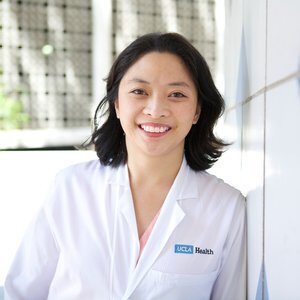Research grant spotlight: Dr. Val Arboleda (UCLA)
Research is critical to drive medical science forward and can make a huge difference in quality of life both for the ASXL patients and the caregivers.
This year the ARRE Foundation approved five diverse scientific and clinical research grants, each one exploring a unique aspect of the ASXL syndromes. This article will spotlight some of the work of Dr. Arboleda from UCLA.
Dr. Arboleda is putting her team to work to make a difference. Together with her colleague, Dr. Bianca Russell, Dr. Arboleda applied for a grant to conduct research on ASXL-related disorders entitled “Molecular and Clinical Biomarker Development for Bohring-Opitz Syndrome”.
Of the ASXL disorders, her specific focus is on Bohring-Opitz Syndrome, which is caused by a de novo mutation on the ASXL1 gene. This means that, as far as we know, children develop it randomly and neither parent is a carrier. She has chosen this focus because the early investment in creation of the biobank allowed for easy access to samples at UCLA. We owe a huge debt to those families that have given their tissue samples and information to the registry/tissue bank at UCLA, without those samples meaningful research like this would not be possible. (For more information on how to participate and donate see below.)
The development of clinical exome sequencing has revolutionized the ability to diagnose BOS and other syndromes like it, but treating it is a different story. One of the main problems is that the full role of ASXL1 in human development is not completely understood. Understanding this role is key in identifying treatments.
In the spring of 2020, the ARRE Foundation funded Dr. Arboleda’s research proposal, in which the stated goal was to “develop the knowledge base and molecular assays to eventually be able to rapidly screen for potential drugs that might help individuals with Bohring-Opitz Syndrome.”
Molecular assays are tests. They work by identifying either specific genetic material or unique markers. An example of a molecular assay that you might be familiar with are rapid strep tests for the diagnosis of strep infections.
The first part of the plan is to discover if BOS alters the structure of DNA in the cell nucleus. Then, does the type of cell or tissue influence that change? For instance, does a skin cell have a different structural change than a liver cell? Knowing what changes are there will help us know how to approach treatments and give us a starting point for later comparisons.
In the second part of the plan, Dr. Arboleda’s team will take the knowledge they have gained so far and use it to develop the assays or tests that were mentioned earlier. In the future, we can use these tests and this information in order to discover which drugs might be therapeutic and helpful to BOS patients.
Ultimately, the goal of Dr. Arboleda’s research is to bring us one step closer to a world where there are answers. One in which we know the unique function of the ASXL genes and what happens when something goes wrong. A world where, when a BOS child is diagnosed, their doctor can give them a list of medications that can relieve some of the worst symptoms.

